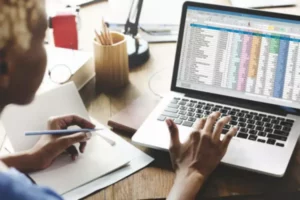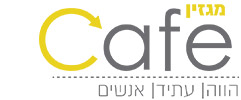Content
- Calculate Cost of Labor
- Expert-approved Restaurant Bookkeeping Tips
- Recommendations for Restaurant Accounting Software
- Restaurant Types
- Built By Restaurant Industry Veterans
- What Is the Relationship Between General Ledger & Bank Reconciliation?
- How to Do Restaurant Accounting: Restaurant Accounting Methods

We chose ZIpBooks as our accounting software for restaurants with the best price because it offers a free option, which is great if you want to try it out or only need limited features. It also offers other affordable monthly plans, and some of them come with free trials. As you look at all the facets of restaurant accounting, it’s important to know about two different bookkeeping for restaurants accounting methods. Some restaurants set up weekly accounting periods while others do it monthly. Once you know when your accounting periods will be, it can make it easier to compare different aspects of your business. Cash flow statements are helpful for restaurants because they let you know whether you have enough money coming in to cover your expenses.
Gore's Smokeout BBQ opens in west Louisville thanks to nonprofit – WHAS11.com
Gore's Smokeout BBQ opens in west Louisville thanks to nonprofit.
Posted: Fri, 12 May 2023 07:00:00 GMT [source]
If you create new items in your POS then Shogo will automatically detect this and email you to update your accounting mapping with the proper QBO category. Once you do this it will then send the journal entry to QBO automatically. You can stuff your receipts into one of our Magic Envelopes (prepaid postage within the US). Use our receipt tracker + receipt scanner app (iPhone, iPad and Android) to snap a picture while on the go.
Calculate Cost of Labor
While long-term trend analysis is important, you should also pull revenue reports on a daily and weekly basis. Because restaurants have a high number of transactions, monthly bank reconciliation used to take hours or days for a restaurant manager to complete. Today’s restaurant accounting tools make bank reconciliation a more efficient and accurate process by automatically matching your records against your accounts. This helps you track any incorrect deposits, lost invoices, or sales discrepancies. It also helps you catch any accounting errors through automated data transfer. With such tight profit margins in the restaurant industry, it is important to analyze your financial reports on a regular basis.
How do I keep my restaurant account?
- Understand The Language. Asking people for advice is one thing, understanding it is another.
- Accuracy Matters.
- Make Book-Keeping A Daily Practice.
- Know Your Expenses.
- Create A P&L Statement.
- Let Your POS Help You Out.
- Bring In Automation.
- Ask Around.
And if you hire full-time wait staff, you may also need to furnish benefits. Many restaurants rely on part-time or seasonal employees to avoid this expense. Once you can anticipate your busy times, you can schedule your staff members accordingly. Choose an accounting software to streamline your data entry tasks, create customized invoices, track your revenue, create regular profit and loss statements, and review your cash flow. The ideal restaurant accounting software for restaurants should offer robust reporting features, be easy to use and allow you to access data anytime, anywhere.
Expert-approved Restaurant Bookkeeping Tips
https://www.bookstime.com/ involves financial and accounting practices that track your detailed costs and revenue. With organized financial practices and relevant, sophisticated reporting, bookkeeping can help you create a strong foundation for your business decisions. Bookkeeping involves day-to-day finances and budgets, but effective bookkeeping practices also can help you make operational decisions about food, labor, and overhead costs. A restaurant bookkeeper oversees the financial reports of the restaurant. They ensure that the figures are accurate, track inventory, and meet tax obligations.
- This material has been prepared for informational purposes only, and is not intended to provide, and should not be relied on for, tax, legal, or accounting advice.
- A balance sheet spells out the restaurant’s equity, liabilities, and assets during a specified time frame.
- Xero has tools for managing invoices, bank reconciliation, purchases, expenses, inventory, and more.
- A restaurant bookkeeper oversees the financial reports of the restaurant.
- A restaurant balance sheet lists your assets, liabilities, and equity.
Here are some helpful tips to keep in mind when setting up your restaurant’s bookkeeping process. That’s why we created Hone, the perfect mix of bookkeeping service and software that combines decades of experience running successful restaurants with the latest in financial technology. BinWise Pro is an industry-leading beverage inventory management software that streamlines procurement and accounting. Many restaurants use prepaid accounts for overhead expenses like rent, utilities, bar POS software, bar equipment, and more.
Recommendations for Restaurant Accounting Software
Based on the size of your restaurant, you can set up an inventory management system that optimizes food costs and reduces waste. Restaurant accounting is the system of recording, analyzing, and interpreting financial data for a restaurant. For efficient restaurant accounting, you need to understand the ins and outs of the food and beverage industry. This step-by-step article is an excellent overview to help you get a handle on your restaurant bookkeeping.

Outsourcing payroll or using payroll software in the restaurant industry will take a load off of your shoulders. Calculating payroll in the restaurant industry can sometimes get a little tricky for a business owner who is dealing with multiple wages, employees coming and going, and irregular work hours. There are also benefits, insurance, and federal and state tax obligations to keep up with. Learn how to do bookkeeping for a restaurant, how to set up your books, what to track, and the best practices for restaurant accounting.
Restaurant Types
To better understand restaurant bookkeeping, read these restaurant account tips and suggestions, and get on the way to being as successful as you imagined. Depending on your sales volume and the tasks you need help with, your bookkeeper may only work on your records a couple of hours a day or week. Ideally, you’ll want a bookkeeper who is familiar with the restaurant industry. Typically, they’re happy to send their bookkeepers more work if they can accommodate it.
CoGS represents the actual cost of food and beverage used to produce your food and beverage sales. By keeping tabs on your CoGS ratio, you can take action to reduce and contain your inventory costs. So here are the essentials of restaurant accounting and bookkeeping when it comes to reports, processes, and KPIs. Put simply, prime costs is the sum of your restaurant’s costs to sell its food, drinks and products—your COGS as mentioned above—plus the labor costs of your salaried and casual staff. Industry averages suggest your prime costs should be between 55% and 60%. You should reconcile bank accounts, credit cards, loans, lines of credit, and payroll liabilities.

